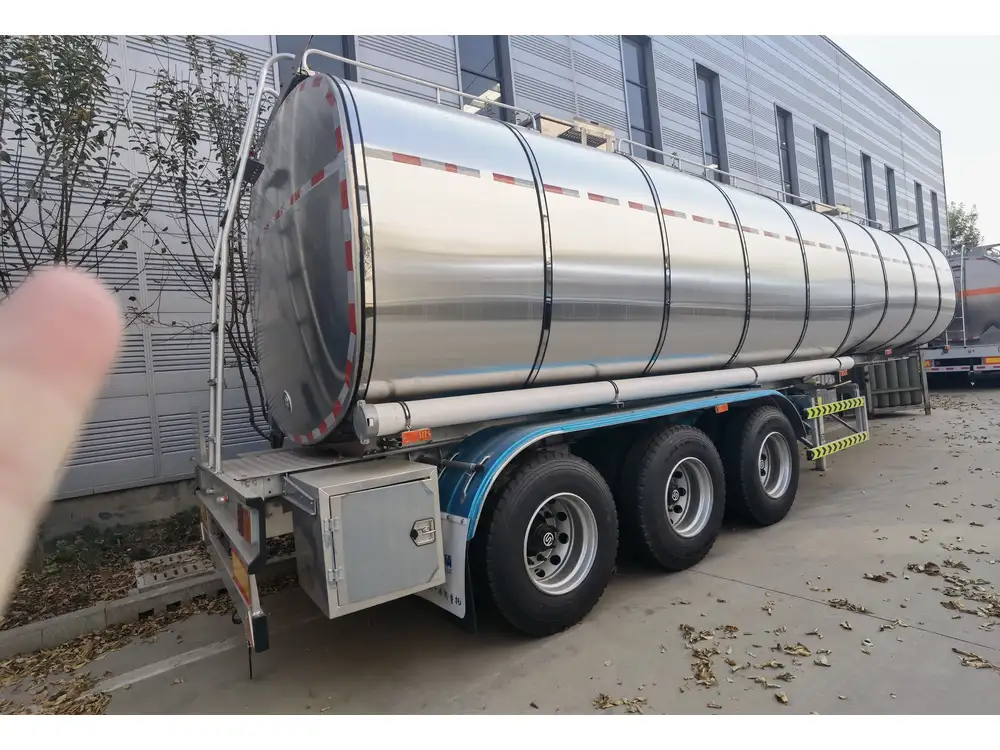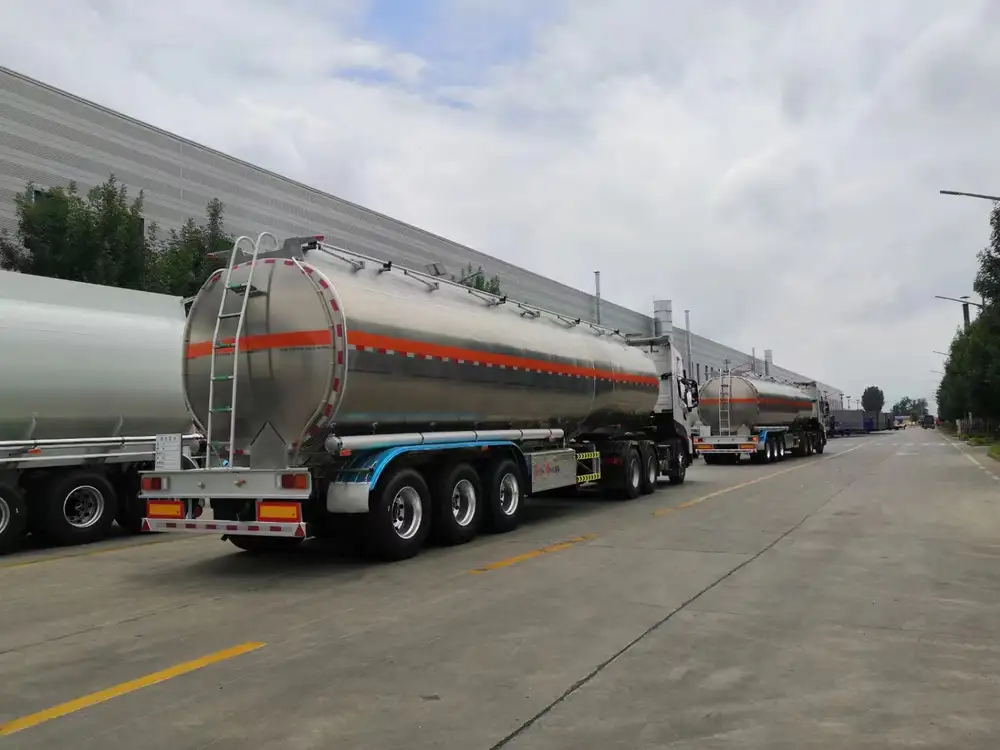When exploring options for maritime transportation, especially in the oil industry, a reliable and efficient oil tanker is indispensable. For companies engaged in crude oil exportation, securing a new oil tanker for sale in Namibia is not just about logistics; it’s about ensuring safety, compliance, and profitability. This article delves into the types of oil tankers available, critical features to consider, and insights into the maritime industry in Namibia, all while positioning CarMax Vehicle as your trusted partner for high-quality semi-trailers suitable for oil transportation.
Types of Oil Tankers
Oil tankers are classified based on various parameters, including size, capacity, and design. The following table outlines the primary types of oil tankers that one might encounter:
| Type | Description | Capacity Range |
|---|---|---|
| Suezmax | Designed to navigate the Suez Canal; ideal for medium-distance shipments | Up to 1 million barrels |
| Aframax | Versatile tankers used in shorter hauls; suitable for various ports | 80,000 – 120,000 DWT |
| VLCC (Very Large Crude Carrier) | Used for long-haul crude oil transportation; efficient for larger scales | 200,000 – 320,000 DWT |
| Panamax | Sized to fit through the Panama Canal; commonly used in regional transport | 60,000 – 80,000 DWT |
| Small Tankers | Ideal for niche markets and smaller ports; used in local distributions | Less than 60,000 DWT |
Benefits of Different Oil Tanker Types
Different types of oil tankers serve specific needs in the market. Understanding these differences can help your business make informed decisions:
Suezmax Tankers: Perfect for companies looking to optimize routes between major oil-producing nations. Their ability to efficiently navigate the Suez Canal makes them ideal for international trade.
Aframax Tankers: These are designed for operators who require flexibility in both port access and cargo types, as they can transport a wide variety of liquid commodities.
VLCCs: Best suited for major firms that transport oil over long distances. Their immense capacity allows for economies of scale, reducing per-barrel transportation costs.
Panamax Tankers: Their design allows for competitive pricing on routes that must pass through the Panama Canal, offering an ideal solution for companies targeting trade routes in the Americas.
Small Tankers: For smaller niches or those servicing local markets, small tankers provide the flexibility and maneuverability needed when larger vessels can’t access certain ports.

Key Features to Consider When Purchasing an Oil Tanker
Acquiring a new oil tanker requires careful consideration of several features to ensure it meets operational requirements and compliance standards.
1. Capacity and Size
One of the foremost considerations is the tanker’s capacity. The right size ensures your operation remains efficient without excessive downtime or costs. Consider the projected shipping volumes and the infrastructure of your loading and unloading ports.
2. Design and Materials
Modern oil tankers are often constructed from high-grade steel designed to withstand harsh marine environments. Additionally, the internal design should include multiple segregated tanks to prevent cross-contamination.

3. Safety Standards
Compliance with international maritime safety standards is non-negotiable. Look for tankers equipped with state-of-the-art safety features, including double hulls, advanced navigation systems, and firefighting equipment.
4. Fuel Efficiency
Fuel costs significantly impact profitability. Newer models offer improved fuel efficiency through cutting-edge design and engine technology. Prioritize these features to ensure lower operational costs.
5. Environmental Compliance
With increasing regulations on emissions and environmental impact, choose a tanker designed with eco-friendly measures. Compliance with MARPOL regulations is essential for sustainable operations.

The Maritime Landscape in Namibia
Namibia’s geographical position and natural resources present a unique opportunity for maritime enterprises. With a coastline that stretches over 1,500 kilometers, it serves as an essential hub for oil exportation to international markets.
Economic Significance
The oil and gas sector in Namibia is increasingly vital, significantly contributing to economic growth. The country’s government has established policies aimed at attracting investments in oil extraction and refining capacities, creating a favorable environment for maritime logistics.
Available Infrastructure
Namibia boasts several key ports vital for oil transportation, including:
- Walvis Bay: The primary commercial port facilitating international trade.
- Lüderitz: A smaller port that can accommodate smaller vessels and is crucial for regional trade.

Partnering with CarMax Vehicle
At CarMax Vehicle, we understand the complexities involved in maritime transport. As an experienced manufacturer of semi-trailers, we provide leading solutions for transporting oil via road to and from ports. Our offerings ensure that your logistics remain efficient, safe, and cost-effective.
Why Choose Us?
Custom Solutions: We tailor our semi-trailers to meet your specific needs, optimizing for capacity, durability, and compliance.
Top-Notch Quality: Our manufacturing processes adhere to the highest quality standards, ensuring reliability and performance under rigorous conditions.
Expertise: With years of experience in the industry, our knowledgeable team supports you throughout the purchasing process, ensuring you choose the right equipment.
Customer Support: We pride ourselves on providing excellent customer service long after the sale. Our dedicated support is here to assist you with any issues that arise.
Conclusion
Investing in a new oil tanker for sale in Namibia can dramatically affect your business’s operational efficiency and profitability. Understanding the different types of tankers available, key features to consider, and the maritime infrastructure in Namibia is essential for making an informed decision. Partnering with CarMax Vehicle ensures that you not only acquire a high-quality tanker but also the necessary supplementary equipment for a smooth logistical operation.
With our durable semi-trailers designed for the transportation of oil, you can ensure compliance and safety during your operations. Contact us today to explore our range of products and take advantage of the burgeoning maritime opportunities in Namibia.

FAQs
1. What are the maintenance requirements for an oil tanker?
Regular inspections, cleaning, and compliance checks for safety equipment and environmental regulations are crucial for maintaining an oil tanker.
2. How do I finance the purchase of a new oil tanker?
Several financing options exist, including bank loans, leasing arrangements, and partnerships. Consulting with a maritime finance specialist can provide tailored options.
3. What safety features should an oil tanker include?
Essential safety features include double hulls, emergency shut-off valves, fire suppression systems, and advanced navigation technology.
4. Can CarMax Vehicle assist in logistics planning?
Absolutely! Our team offers consulting services to help you optimize your transport logistics for maximum efficiency and cost-effectiveness.













Reviews
There are no reviews yet.